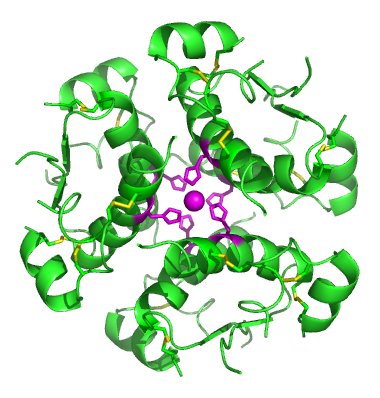Prior to the discovery of insulin, diabetes often resulted in fatalities. The disease is considered much less serious now that extractable insulin is well-established as an effective treatment for diabetes; however, it is important to analyze the historical methods in which the cure was globally implemented in case something similar occur. Imagine if a cure for cancer was discovered – I can picture the news making global headlines that very same day. But how would such groundbreaking news spread to the most isolated communities? Or would it at all? Who would have physical access to such a cure first? Using insulin as an example, I can deduce why it is too quickly assumed that such a cure would automatically reach everyone in the world with cancer.
Insulin As a Cure – Patients with type 1 diabetes can’t produce insulin by themselves, so insulin can be extracted from animals and injected into the patient to stabilize blood sugar levels (which if unstable could lead to toxic effects.) Insulin stops the catabolism of fat into energy by inhibiting the release of glucagon and removing excess glucose from the blood. The structure of insulin protein is shown below:
The following is a short animated video about Insulin, Glucose and You:

Discovery
 Insulin was extracted from the pancreas by Frederick Banting and Charles Best in 1921 at the University of Toronto. They tested the anti-diabetic qualities of the pancreatic extract on a dog before their first human test subject, a 14 year-old boy, in 1922 – the results were “spectacular.” The two went around the diabetic ward of the Toronto General Hospital injecting comatose and dying children. “Before injecting their last comatose patients, the first started to awaken from their comas.”
Insulin was extracted from the pancreas by Frederick Banting and Charles Best in 1921 at the University of Toronto. They tested the anti-diabetic qualities of the pancreatic extract on a dog before their first human test subject, a 14 year-old boy, in 1922 – the results were “spectacular.” The two went around the diabetic ward of the Toronto General Hospital injecting comatose and dying children. “Before injecting their last comatose patients, the first started to awaken from their comas.”
How did the discovery spread globally?
Banting and his laboratory director John MacLeod received the Nobel Prize in Physiology or Medicine for the discovery in 1923 and both immediately shared credit (and prize money) with other individuals involved including Best. This news made headlines all over the world.
Banting and Best made the patent available without charge and didn’t try to control the commercial production of insulin. This played a huge role in the rapid spread of insulin as a cure. Also, prior to insulin, a strict diet was the best way to increase life-expectancy of diabetics (American Diabetes Association 2012). Insulin surely allows diabetics a less restrictive lifestyle (another reason for the increased demand); unfortunately the dietary freedom has caused the percentage of the US population diagnosed with diabetes to increase since 1980 (Polonsky 2012).
There is very little analysis of the physical spread of insulin at its time of discovery. It was such a major discovery that improved and saved the lives of many, yet how it became this way has been taken for granted, all we remember is that it happened. It is popular belief that the cure was in such a high demand and was so dramatically effective that it would find its own way around the globe. I argue that this isn’t exactly the case – many poorer countries in Africa still suffer fatalities from diabetes today because they lack access to insulin (Cohen 2011).
Grattin Cox




